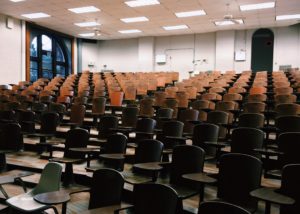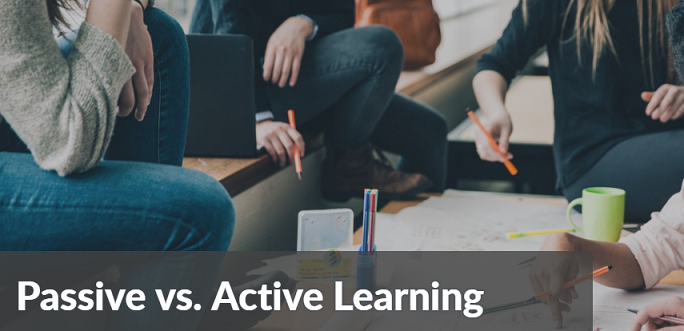See the professor, the sage on the stage in the lecture hall, performing with energy and passion in front of a class, perhaps ten students at a private college or maybe a hundred or even several hundred at a public university. With a flourish, key terms are written on a chalkboard or projected upon a screen. Dramatically delivered anecdotes illuminate concepts explaining the past and predicting a myriad of possible futures. Students scribble furiously, attempting to capture every bit of revelation offered to them. Knowledge is no longer a collection of mere facts, but instead reveals the far-reaching connections composing the universe.

This is an enduring cultural image of the university experience: the innumerable hours students spend in lecture halls learning everything from first-year fundamentals to advanced subjects in senior-level classes. However, for many educators, one important, nagging question persists: Does the lecture method work?
Passive vs. Active Learning
Dr. Carl Wieman, recipient of the Nobel Prize in Physics in 2001, is one such person who questioned the effectiveness of the lecture method. Dr. Wieman realized, upon reflection, his graduate students learned more from hands-on laboratory work than having knowledge “told” to them in a lecture hall or classroom earlier in their educational careers.
Perhaps, he thought at the time, grad students were simply more mature. Or, if that wasn’t the case, maybe the lecture system wasn’t efficient in transmitting knowledge or developing competencies.
Being a scientist, he conducted a series of tests to determine an answer. This research culminated in a study at the University of British Columbia where over 500 students in two introductory undergraduate physics classes were taught using passive learning (the lecture method) vs. active learning (group collaboration, problem solving, and applied knowledge).
The results were striking.
The active learning cohort had higher student attendance, increased engagement, and demonstrated over twice the learning than the passive learning cohort.
These results are not limited to Wieman’s research. A recent study led by Scott Freeman analyzed the results of 225 studies of examination scores and failure rates of college students in science, technology, engineering, and mathematics (STEM) courses using passive and active learning teaching methods. Students in lecture-based STEM classes were 1.5 times more likely to fail while students in active learning classes produced higher examination scores.
Their conclusion?
“The results raise questions about the continued use of traditional lecturing as a control in research studies, and support active learning as the preferred, empirically validated teaching practice in regular classrooms.” The Active Learning Classroom So, what are the hallmarks of the active learning classroom?
Instead of a lecture, expect to participate in experiential learning activities: student-led discussions, problem-solving scenarios, peer review, self-evaluations, case studies, and more. Or, to look at it another way, the classroom moves from being teacher-centered (instructor as dispenser of knowledge) to student-centered (students as discoverers of knowledge). Logistically, this approach necessitates a smaller class size more typical of liberal arts and private colleges.
 Professors must rethink their role in the classroom because, despite its limitations, the lecture method allows them to have a high degree of control: choosing the information to be presented, determining the amount to be covered, and how it will be delivered. In contrast, the active learning classroom, more organic and freewheeling, may veer unexpectedly from one topic to another, work through less overall content, and demand professors improvise on the spot to meet student needs as situations spontaneously develop.
Professors must rethink their role in the classroom because, despite its limitations, the lecture method allows them to have a high degree of control: choosing the information to be presented, determining the amount to be covered, and how it will be delivered. In contrast, the active learning classroom, more organic and freewheeling, may veer unexpectedly from one topic to another, work through less overall content, and demand professors improvise on the spot to meet student needs as situations spontaneously develop.
Active learning demands far more rigorous effort than mere note taking from students. Now that the class is not built around the instructor exhibiting knowledge, students must demonstrate continually what they have discovered.
For the student, learning is no longer a spectator sport, but is now an activity where they are doing the heavy lifting. This requires a conscious decision to engage with the course matter, instructor, and classmates.
Active Learning for Life
The benefits of the active learning classroom extend further than just the college experience. The students develop skills employers want, but have trouble finding in the hiring process. A recent study from the Association of American Colleges and Universities (AACU) concluded: “Large majorities of employers do NOT feel that recent college graduates are well prepared. This is particularly the case for applying knowledge and skills in real-world settings, critical thinking skills, and written and oral communication skills — areas in which fewer than three in 10 employers think that recent college graduates are well prepared.”

